Members
- (1) Group 1: Elucidation of homeostatic mechanisms by inter-organ communication and development of therapeutic and diagnostic methods
- Group 1-1: Elucidation of the molecular mechanism that transmits peripheral organ information to the central nervous system and development of its control methods
- Group 1-2: Elucidation of the neural circuits of the emotion-autonomic nerve coupling in the central nervous system and development of their control methods
- Group 1-3: Elucidation of the regulation of organ functions by efferent nerves and development of neuron control methods
- Group 1-4: Elucidation of the pathogenesis of diabetes mellitus and its comorbidities through autonomic reflexes by gut-liver-brain correlation and establishment of new treatment methods
- Group 1-5: Development of early diagnosis and preventive therapy by GPCR ligands
- (2) Group 2: Elucidation and control of the mechanism of multi-organ transformation in diabetes mellitus
- Group 2-1: Elucidation and regulation of inflammatory and stress response mechanisms in multiple organs
- Group 2-2: Elucidation and control of cerebrovascular alterations in diabetes mellitus
- Group 2-3: Elucidation and control of liver transformation in diabetes mellitus
- Group 2-4: Development of prevention and treatment of diabetic comorbidities using ketone body
- Group 2-5: Preparation and application of multi-organ whole cell atlas for elucidation of organ transformation in diabetes
- (3) Group 3: Development of technology for easy acquisition of biometric data in humans and analysis of human data
- Group 3-1: Development and social implementation of contact and non-contact biometric acquisition devices
- Group 3-2: Generation of novel models of inter-organ networks by genome analysis and prediction of ultra-early risk of diabetes
- Group 3-3: Development of prediction methods for ultra-early stages of diabetes and prognosis
- (4) Group 4: Understanding homeostasis through mathematical model analysis and its applications
- (5) Group 5: Understanding the pre-symptomatic stage of diabetes and its complications and building a database
(1) Group 1: Elucidation of homeostatic mechanisms by inter-organ communication and development of therapeutic and diagnostic methods
Group 1-1: Elucidation of the molecular mechanism that transmits peripheral organ information to the central nervous system and development of its control methods
Principal investigator

Principal investigator
Tetsuya Yamada, Professor, Graduate School of Medical and Dental Sciences, Institute of Science Tokyo
The brain receives information regarding the metabolic state of peripheral organs and in turn coordinates systemic metabolism, but the underlying molecular mechanism has not been fully elucidated. In this research project, we will elucidate the molecular mechanism of how afferent nerves from the peripheral organs are activated and how they send off metabolic signals to the brain. First, we will perform single-cell analysis and classify neurons that form the afferent nerves into subtypes, which would allow us to study individual subset of neurons instead of bulk of heterogeneous neurons. Furthermore, we will identify physiological ligands and compounds that target specific subset of neurons as agonists or antagonists and develop ways to control inter-organ neural network, which would lead to treatment or even prevention of diabetes and its comorbidities.

Junken Aoki, Professor, Graduate School of Pharmaceutical Sciences, The University of Tokyo
In this study, we will elucidate the molecular mechanisms that transmit metabolic information to afferents vagal nerves that project to peripheral organs, with a particular focus on lipid signaling. We aim to identify the afferent vagal nerve receptors that sense the peripheral metabolic information and regulate, for example, basal metabolism, proliferation of pancreatic beta cells, and changes in blood pressure. In addition, we will search for physiological ligands and compounds that act as stimulants or inhibitors of vagal nerves.

Asuka Inoue, Professor, Graduate School of Pharmaceutical Sciences, Kyoto University
In this project, Inoue Group will identify G-protein-coupled receptors (GPCRs) expressed on afferent nerves and will elucidate the signaling mechanisms through which individual peripheral organs are interconnected and regulated by each other. Identification of such extracellular regulators and their receptor systems underlying the organ-to-organ networks will contribute to the prevention and treatment of diabetes and complications.

Takayuki Doi, Dean/Professor, Graduate School of Pharmaceutical Sciences, Tohoku University
Synthesis of GPCR ligands that control the vagus nerve will be studied.
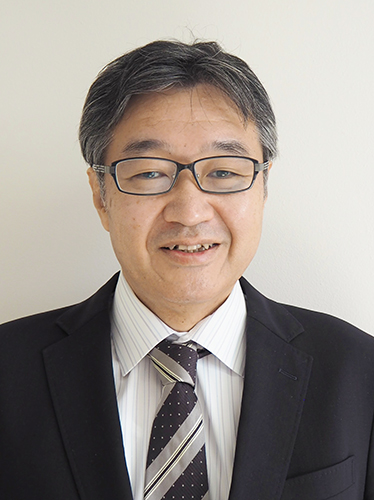
Hideki Katagiri, Professor, Tohoku University Graduate School of Medicine
By elucidating the molecular basis of our originally discovered inter-organ neuronal communication that leads to the proliferation of pancreatic β cells, we aim to develop strategies for increasing the patient's own β cells at sites where they should be, to reverse glucose intolerance of early-stage diabetes.
Group 1-2: Elucidation of the neural circuits of the emotion-autonomic nerve coupling in the central nervous system and development of their control methods
Principal investigator
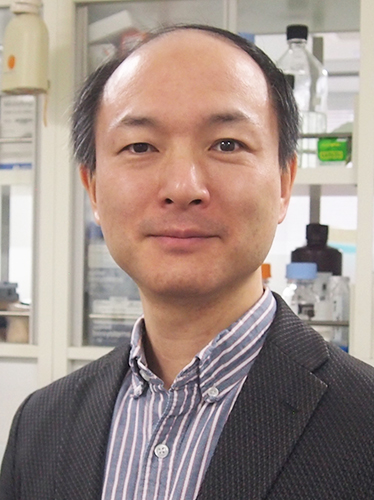
Principal investigator
Kazuhiro Nakamura, Professor, Nagoya University Graduate School of Medicine
We will elucidate the neural circuit mechanisms that link the corticolimbic system, which processes emotion and psychological stress, with the autonomic regulatory system in the brain by analyzing not only mice and rats but also humans, and develop the technology to control the neural circuits. Furthermore, based on the obtained knowledge on the central homeostatic circuit mechanisms, we will deepen our understanding of the etiologies of diabetes and related diseases and contribute to the development of preventive and therapeutic approaches by the artificial control of the homeostatic system of the body with the central neural manipulation technology.

Yukio Nishimura, Project Leader, Tokyo Metropolitan Institute of Medical Science
Emotion and psychological stress affect the autonomic nervous system, which in turn has a significant effect on the homeostasis in the entire body. Although such mind-body interaction is well known, the mechanisms in the central nervous system remain unclear. This project aims to elucidate the neural mechanisms that link the emotion and autonomic nervous system using animals and humans, and develop methods to the metabolic and cardiovascular functions. We employ functional magnetic resonance imaging to draw the neural circuits bridging emotion and autonomic nervous system in humans. To establish a method for controlling the metabolic and cardiovascular functions, we develop a system for artificially controlling the autonomic nervous system through a computer interface.

Hideki Katagiri, Professor, Tohoku University Graduate School of Medicine
We will promote research aimed at identifying the central neural circuits that mediate the inter-organ networks that lead to pancreatic β-cell proliferation.
Group 1-3: Elucidation of the regulation of organ functions by efferent nerves and development of neuron control methods
Principal investigator

Principal investigator
Yukio Nishimura, Project Leader, Tokyo Metropolitan Institute of Medical Science
This project aims to develop a method for non-invasive monitoring of internal organs using magnetic resonance imaging (MRI). Specifically, we apply functional MRI, which has been used for functional imaging of the brain, to internal organs related to metabolism, and develop a method for monitoring the metabolic dynamics of internal organs based on the dynamics of BOLD signal. Furthermore, we will develop a method to control the activity of targeted organs by stimulating the efferent nerves projecting to the organs.
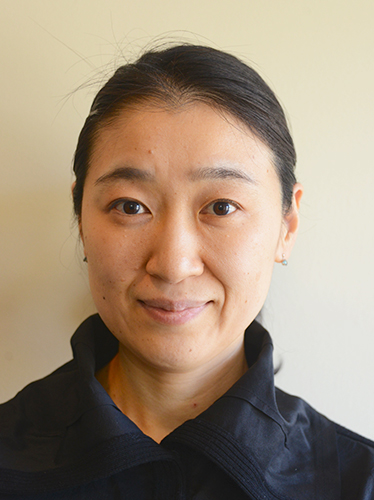
Misa Yoshimoto, Professor, Faculty of Human Life and Environmental Sciences, Nara Women's University
The autonomic nervous system, which plays a central role in communication among organs within the body, is involved not only in the maintenance of dynamic homeostasis but also in the development of diabetes and concomitant diseases. This project will use animals to simultaneously and continuously measure sympathetic nerve activity in multiple organs in conscious animals during normal and pathological states. This time-based data will serve as the basis for elucidating dynamic response from the healthy state to the diseased state. Furthermore, we will also attempt to measure parasympathetic nerve activity in conscious animals, and subsequently study the potential contribution of sympathetic and parasympathetic nerve activities in maintaining dynamic homeostasis under normal conditions and during pathogenesis of diabetes and concomitant diseases.

Yoshiyuki Kasahara, Lecturer, Tohoku University Graduate School of Medicine
With the aim of elucidating the pathogenesis of diabetes and its concomitant diseases and diagnosing them at very early stage from the fetal stage, we will develop a new method of measuring autonomic nerve activity using mouse models to extract signals of autonomic nerve activity from large amount of noise. In addition, based on the concept that fetal risks cause future diseases, we will use various mouse models of diseases caused by genetic and environmental factors to detect signs of diabetes and its concomitant diseases in the fetal period, and conduct research to elucidate the pathogenesis of the diseases and to provide very early diagnosis, treatment, and prevention.
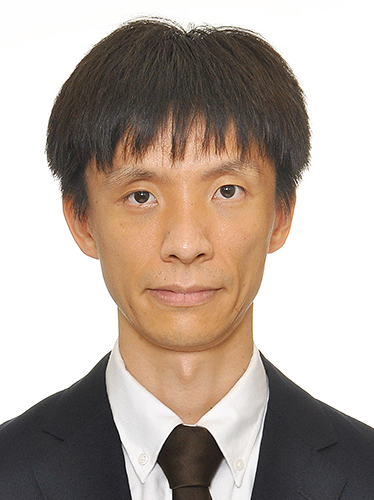
Kuniyasu Niizuma, Professor, Graduate School of Biomedical Engineering, Tohoku University
Vagus nerve stimulation is a type of treatment for epilepsy. Recently, the possibility of vagus nerve stimulation in preventing metabolic syndromes such as obesity. In this study, we examine glucose metabolisms in the patients who experienced implantation of vagus nerve stimulator for the treatment of epilepsy. If the relationship between vagus nerve stimulation and glucose metabolism is clarified, vagus nerve stimulation can be a novel treatment for diabetes.
Group 1-4: Elucidation of the pathogenesis of diabetes mellitus and its comorbidities through autonomic reflexes by gut-liver-brain correlation and establishment of new treatment methods
Principal investigator
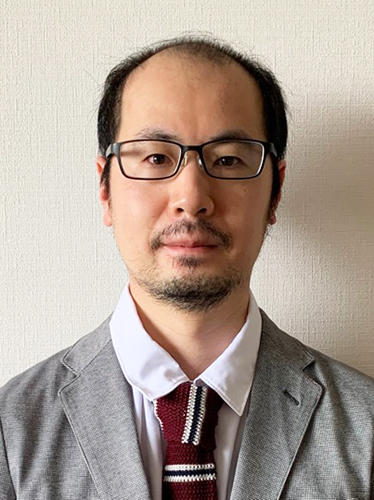
Principal investigator
Toshiaki Teratani, Specially Appointed Associate Professor, Keio University School of Medicine
Recently, we have discovered that the gut-liver-brain axis is important for maintaining homeostasis. On the other hand, it has long been known that lifestyle changes have a strong influence on the gut ecology and metabolic modulation. Therefore, the changes were hypothesized to be involved in energy metabolism in the whole body through intestinal-liver-brain axis disturbance. Therefore, in this project, we aimed to elucidate the mechanism of the nervous system that senses lifestyle changes and to develop a specific neural control method (hepatic vagus nerve stimulation) for the treatment of diabetes.
Group 1-5: Development of early diagnosis and preventive therapy by GPCR ligands
Principal investigator

Principal investigator
Junken Aoki, Professor, Graduate School of Pharmaceutical Sciences, The University of Tokyo
In this study, we will establish a method for detecting GPCR ligands in vivo and develop a simple method for early diagnosis of diabetes and related diseases during pathological conditions, especially focusing on lipid GPCR ligands. In addition, we will create ligand compounds (agonists and antagonists) for GPCRs and investigate whether disease prevention is possible by modulating GPCR signaling by these compounds. The results of these studies will be used to develop early pathological markers and treatment methods for diabetes and concomitant diseases.
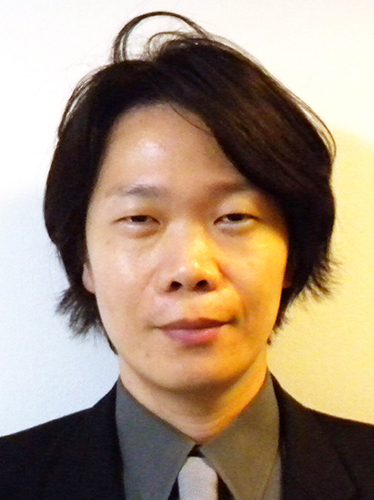
Ikuo Kimura, Professor, Graduate School of Biostudies, Kyoto University
Metabolic disorders, such as obesity and diabetes, arise from disrupted energy homeostasis that depends upon the equilibrium between energy intake and expenditure. Recently, increasing evidence indicates that dietary nutrients serve not only as energy sources but also as natural ligands for some G protein-coupled receptors (GPCRs), essentially intertwining metabolism and immunity in multiple ways, such as via inflammatory response, neural regulation, and secretion of peptide hormones. On the basis of the investigating of physiological and pathological functions of GPCRs, we aim to elucidate the comprehensive energy regulation mechanism via diet-intestinal environment-dietary metabolites-GPCRs-multiple organ network signaling.

Asuka Inoue, Professor, Graduate School of Pharmaceutical Sciences, Kyoto University
In this project, Inoue Group will discover physiological ligands for G protein-coupled receptors (GPCRs), which participate in progression of diabetes and related diseases, and will develop biosensors to measure these ligands with high sensitivity in real time. Inoue Group will focus on lipid metabolites produced by gut microbiota. Through this research, we will understand the molecular basis of healthy livings and will contribute to the prevention of diabetes and complications.

Takayuki Doi, Dean/Professor, Graduate School of Pharmaceutical Sciences, Tohoku University
Synthesis of GPCR ligands that control the vagus nerve will be studied.
(2) Group 2: Elucidation and control of the mechanism of multi-organ transformation in diabetes mellitus
Group 2-1: Elucidation and regulation of inflammatory and stress response mechanisms in multiple organs
Principal investigator
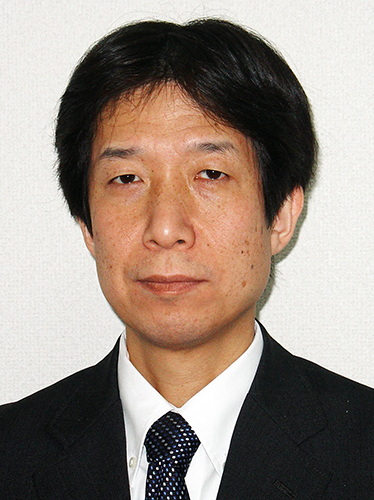
Principal investigator
Ichiro Manabe, Professor, Graduate School of Medicine, Chiba University
The prevalence of heart failure is increasing worldwide. Heart failure is not only a major complication of diabetes, but is also associated with a variety of other physical and mental disorders, suggesting that mechanisms involving multiple organs play pivotal roles in the development and progression of heart failure. By focusing on inflammation and dysfunctional stress response, we will elucidate the molecular mechanism that link heart failure and other diseases, including diabetes and develop new therapeutic and preventive strategies for heart failure and multimorbidity.

Kazuhiro Suzuki, Professor, WPI Immunology Frontier Research Center, Osaka University
Obesity induces immune cell recruitment and consequently chronic inflammation in adipose tissues, which can result in the development of type 2 diabetes mellitus. B cells are recruited to adipose tissues at an early stage of obesity and thought to trigger inflammatory responses. However, it remains unclear how B cells induce and promote adipose tissue inflammation. In this study, we aim to comprehensively characterize B cell subsets accumulating in adipose tissues and clarify their roles in obesity-induced inflammation. Based on the recently established roles of the autonomic nervous system in the control of B cell functions, we also aim to reveal how inputs from autonomic nerves influence B cell behaviors and inflammatory processes in adipose tissues. Our study would lead to novel prophylactic and therapeutic strategies for type 2 diabetes mellitus targeting adipose tissue B cells.
Group 2-2: Elucidation and control of cerebrovascular alterations in diabetes mellitus
Principal investigator

Principal investigator
Kuniyasu Niizuma, Professor, Graduate School of Biomedical Engineering, Tohoku University
Atherosclerotic diseases such as heart disease and cerebrovascular disease account for two-thirds of deaths among diabetics, and the progression of atherosclerosis is faster in diabetics than in non-diabetics. From the perspective of cerebrovascular disease, conditions caused by diabetes can be regarded as "pre-disease" conditions that are in the preliminary stages of causing brain disease. When blood vessels are narrowed or occluded, collateral blood vessels develop to compensate for the narrowing or occlusion, and cerebral blood flow is maintained; however, it is inhibited in diabetics. In this study, we analyze the details of collateral blood flow development and develop preventive and therapeutic methods for stroke under diabetic conditions.
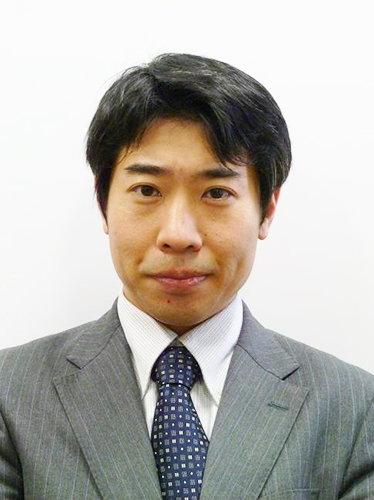
Kazuto Masamoto, Professor, Graduate School of Informatics and Engineering, University of Electro-Communications
In diabetes, the regulation of brain microcirculation is altered by the inflammatory response of brain vascular endothelial cells. However, little is understood about the mechanism of functional integrity in the neurovascular unit under diabetic conditions and its association with vascular endothelial damage due to inflammation. The aim of this study is to elucidate the mechanism involved in the plastic changes of the neurovascular unit against cerebrovascular diseases in diabetes, and to develop a method for normalization and reconstruction of neurovascular units. Using a large-scale analysis method for four-dimensional mesoscopic-scale images of neurovascular unit in vivo, this study investigates the mechanism of cerebrovascular remodeling involved in the development of collateral circulation during cerebral ischemia, adaptive changes in cerebral microcirculatory dynamics, and the spatiotemporal interaction between cells in the neurovascular unit.
Group 2-3: Elucidation and control of liver transformation in diabetes mellitus
Principal investigator

Principal investigator
Hideki Katagiri, Professor, Tohoku University Graduate School of Medicine
Nutrients and insulin reach the liver directly via the portal vein. The decreased ability of the liver to dispose of glucose causes postprandial blood glucose elevation, which is a characteristic of the very early stage of diabetes. Therefore, by elucidating the mechanism(s) determining the postprandial glucose disposal capacity of the liver, we anticipate being able to clarify the states of very early-stage diabetes and develop strategies to reverse these conditions.
Group 2-4: Development of prevention and treatment of diabetic comorbidities using ketone body
Principal investigator
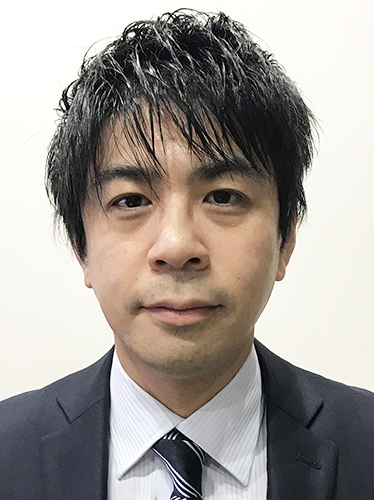
Principal investigator
Shinji Kume, Professor, Department of Medicine, Shiga University of Medical Science
Prevention of diabetic complications and comorbidities is the most important issue in extending the healthy life span of patients with diabetes mellitus. Calorie restriction can extend lifespan in many species from lower species to mammals. However, the precise mechanism underlying the calorie restriction-mediated health beneficial effects remains unclear. In this research project, we focus on the potential power of ketone bodies, which are elevated under the condition of calorie restriction, and try to develop a novel strategy to prevent diabetic complications and comorbidities by regulating ketone body metabolism. We hope that the results obtained from this project will contribute to extending the healthy life span of diabetic patients in the future.
Group 2-5: Preparation and application of multi-organ whole cell atlas for elucidation of organ transformation in diabetes
Principal investigator
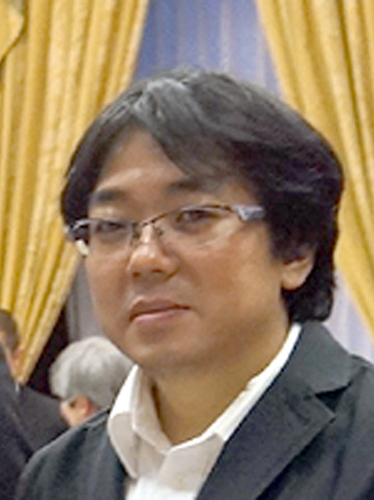
Principal investigator
Katsuhiko Matsumoto, Visiting Scientist, Graduate School of Medicine, The University of Tokyo
We aim to elucidate pathological conditions of systemic diseases such as diabetic diseases by enabling quantitative analysis of the effects on various organs at the cellular level throughout the entire organ or whole body by using single-cell resolution whole organ atlas CUBIC-Atlas. To construct the CUBIC-Atlas of various mouse organs, we are using solution-based tissue clearing technique CUBIC, custom-made high-resolution light-sheet microscopy, and novel high-speed and accurate cell detection algorism. In addition, we are developing a light-sheet microscope for wide-field observation to perform high-throughput 3D imaging of whole organs or the whole body. Following the completion of these platforms for whole-organ cell profiling, we will conduct large-scale whole-organ cell profiling using disease model mice to elucidate the pathological conditions.

Rikuhiro Yamada, Associate Professor, Institute of Life Science, Kurume University
To understand the molecular and cellular mechanisms behind central nervous system (CNS) changes such as hypersomnia observed in mouse models of diabetes and other diseases, it is important to capture the cellular changes that occur at the whole brain level. In this project, we will create a whole-brain atlas in single cell resolution, and use the atlas to analyze diabetic mouse models to capture the changes in CNS at the single-cell level.
Shoi Shi, Assistant Professor, Graduate School of Medicine, The University of Tokyo (Project participation period: 2020.12-2022.2)
(3) Group 3: Development of technology for easy acquisition of biometric data in humans and analysis of human data
Group 3-1: Development and social implementation of contact and non-contact biometric acquisition devices
Principal investigator

Principal investigator
Katsuhito Fujiu, Project Professor, Graduate School of Medicine, The University of Tokyo
In this moonshot, our team will carry out research and development that contributes to the early detection of diabetes and heart failure. Especially for individualized medical treatment of lifestyle-related diseases, a large amount of personal biometric information based on system biology is acquired. Therefore, here we perform deep phenotyping of humans with new technologies. We aim to implement health management and medical care in society based on the results. To this end, we will form a platform for data analysis using artificial intelligence and disease onset prediction using mathematical models.
Group 3-2: Generation of novel models of inter-organ networks by genome analysis and prediction of ultra-early risk of diabetes
Principal investigator

Principal investigator
Gen Tamiya, Professor, Tohoku University Graduate School of Medicine
The aims of this study are 1) to interpret the genetic architecture contributing to the background traits of diabetes in the context of inter-organ networks and to obtain new hypotheses on the inter-organ networks of diabetes, 2) to contribute to the elucidation of the mechanisms by the experimental groups, and to obtain feedback from them.
For this purpose, we perform GWAS to extract the set of associated genes that contribute to the time-series changes of diabetes-related traits measured in a large biobank. For these related gene sets, we construct gene networks in tissues and organs using information from publicly available gene-expression databases.
Group 3-3: Development of prediction methods for ultra-early stages of diabetes and prognosis
Principal investigator

Principal investigator
Hideki Katagiri, Professor, Tohoku University Graduate School of Medicine
Through cohort analysis, we aim to elucidate glucose metabolism-related factors related to life expectancy in individuals with normal glucose tolerance and to define the very early stage of diabetes. Our next step will be to develop a simple method of predicting this well-defined early stage of diabetes.
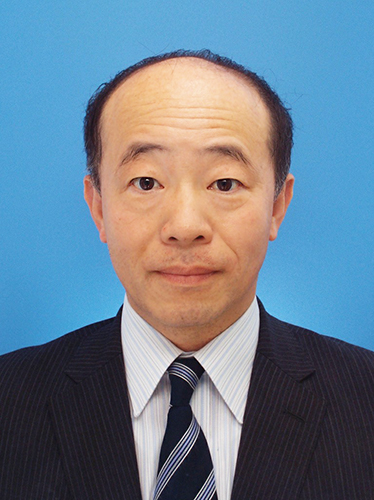
Shojiro Sawada, Professor, Faculty of Medicine, Tohoku Medical and Pharmaceutical University
Development of 13C-glucose breath test as a clinical test to predict the onset of diabetes at an early stage
Glucose utilization mainly consists of mitochondrial glucose oxidation and non-oxidative glycogen synthesis. After meal ingestion, hyperinsulinemia and hyperglycemia stimulate hepatic glycogen synthesis via up-regulating glucokinase and glycogen synthase. In addition, the suppression of hepatic glucose production limits postprandial blood glucose excursion. In this way, the liver is responsible for disposing of one third or more of an oral glucose load in normal individuals. Thus, evaluating hepatic glycogen synthesis is important for management of glucose metabolism, but an easily-applicable and non-invasive method of assessing hepatic glycogen synthesis is lacking. The 13C-glucose breath test is a non-invasive technique for assessment of glucose oxidation in vivo. Therefore, we aim to develop a clinical test method for early prediction of the onset of diabetes by combining data from the 13C-glucose breath test and blood tests.
(4) Group 4: Understanding homeostasis through mathematical model analysis and its applications
Group 4-1: Understanding homeostasis through mathematical model analysis and its applications
Principal investigator

Principal investigator
Hiroshi Suito, Professor, Advanced Institute for Materials Research, Tohoku University
The project target of our group, which comprises applied mathematicians working with other mathematicians of the Nagayama and Chiba groups, is the construction of mathematical models representing a network of various organs and the use of those models to resolve homeostasis-related mysteries. Our model is expected to include metabolism, as supported by the circulatory system, which is regulated by the nervous system. Our group will work mainly on the circulatory system to elucidate that vast parameter space using multi-dimensional mathematical modeling and numerical simulations with high-performance computing. Intimate discussions and collaboration among mathematicians and biologists are essential to the achievement of our moonshot goals.

Masaharu Nagayama, Professor, Research Institute for Electronic Science, Hokkaido University
We will collaborate with researchers in biology and medicine to build a mathematical model to represent the dynamic homeostasis of blood glucose levels. First, we will construct a mathematical model of the organs network using data from model animals and human data. We will extract essential elements and elucidate the regulatory mechanisms that are not understood in individual molecular research. Next, from the organs network mathematical model, we construct a state transition mathematical model expressed in dynamical systems. From this model, we aim to define the presymptomatic disease mathematically. Furthermore, we will use the mathematical model of state transitions to construct a mathematical foundation for a future medical platform.

Hayato Chiba, Professor, Advanced Institute for Materials Research, Tohoku University
We construct a mathematical model to study diabetes, in particular, pancreas and liver, and the network of several organs. For the analysis of mathematical model, we collaborate closely with the other teams in this project, and study the mechanism of diabetes from a view point of mathematics.
(1) Group 5: Understanding the pre-symptomatic stage of diabetes and its complications and building a database
Group 5-1: Construction and analysis of datasets in pre-symptomatic stage and very early stage of diabetes
Principal investigator

Principal investigator
Tetsuya Yamada, Professor, Graduate School of Medical and Dental Sciences, Institute of Science Tokyo
In this project, employing mice fed a high-fat diet, we will examine time courses of biochemical data, such as body weights, blood glucose levels, gene expression and epigenome data of several metabolic organs, metabolome data of metabolic organs and blood samples and metagenome data of feces. In addition, time series of both functional data and spatial information of liver and brain will be analyzed in an integrated manner. Based on these data, we will clarify the transition time point which discriminates before and after the onset of type 2 diabetes. We will also examine human metabolome and genetic data obtained from human cohorts. Furthermore, by collaborating with Moonshot Goal 2 projects, we will perform mathematical model analyses regarding the transition time point which discriminates before and after the onset of type 2 diabetes.

Junken Aoki, Professor, Graduate School of Pharmaceutical Sciences, The University of Tokyo
To identify lipids and metabolites responsible for each stage of diabetes, from pre-diabetes to disease onset and progression, we will establish a lipidomics and metabolomics database using various mass spectrometry (MS) techniques. By combining data from LC-MS analysis with data from MS imaging analysis, we will determine the spatiotemporal distribution of target molecules in various stages of diabetes mellitus.

Hideki Katagiri, Professor, Tohoku University Graduate School of Medicine
We will collect metabolic data on type 2 diabetes over time when mice are fed a high-fat diet, and accumulate data to observe the transition from pre-symptomatic stage to disease. In addition, we will collect blood and fecal samples from various organs and at various time points in order to efficiently analyze data on gene expression, metabolome, and fecal flora.

Ikuo Kimura, Professor, Graduate School of Biostudies, Kyoto University
Gut microbiota influences various host physiological functions such as energy metabolisms and immune systems, and thereby relating on host diseases, including type 2 diabetes and obesity. We will construct a data set of gut microbial profiles at the various stages from healthy stages to type 2 diabetes stages. Then, we will analyze the gut microbial compositions, and identify the gut microbial species and the metabolites that specifically change on the pre-disease stage. We aim to contribute to the biomarker and the development of probiotic bacteria for the prevention and treatment of metabolic disorders, such as type 2 diabetes and obesity.

Jun Takayama, Associate Professor, Tohoku University Graduate School of Medicine
We aim to clarify the transition mechanisms from the “mibyo” or unaffected status, where the individual has not yet developed diseases, to type 2 diabetes by constructing and analyzing big biological datasets, including single-cell omics data of animal models. To this end, we will conduct bioinformatics analyses of time-course data, such as blood glucose levels, body weight, and single-cell next-generation sequencing data of various organs, such as liver and brain, of model mice transitioning from unaffected to type 2 diabetes. We also search for determinants of type 2 diabetes onset, such as gender and aging. We will also integrate cohort data. Through these analyses, we search for the critical point from the unaffected state to type 2 diabetes. We will also contribute to mathematical model analysis in collaboration with other research teams.

Yutaka Hasegawa, Associate Professor, Department of Internal Medicine, Iwate Medical University
In obesity and its-related metabolic disorders, we will identify the factors that contribute to the pathological basis of diabetes and the interorgan network mechanism. We aim to elucidate the functions and roles of these factors on interorgan networks. To construct the human database, we will promote single nuclear gene expression analysis and metabolome analysis using adipose tissue, liver, and blood samples obtained from humans who underwent bariatric surgery. Through this project, we will develop early diagnostic markers and treatment methods for metabolic disorders.
Group 5-2: Construction and analysis of inter-organ network datasets in pre-symptomatic stage of diabetes complications
Principal investigator

Principal investigator
Ichiro Manabe, Professor, Graduate School of Medicine, Chiba University
There is a close link between metabolic and cardiovascular diseases. In this project, we hypothesized that the interaction among the metabolic, cardiovascular, and hematoimmune systems in the prepathological states leads to future disease progression, and we will elucidate the mechanisms that link these systems.

Principal investigator
Katsuhito Fujiu, Project Professor, Graduate School of Medicine, The University of Tokyo
Regarding inter-organ networks in diabetes and concomitant diseases such as heart failure, we will acquire time-series and spatial data of transcriptomes and epigenomes for various tissues and organs centering on the heart and create datasets for the presymptomatic state. Next, we will search for essential genes to the onset of heart failure from presymptomatic disease. Finally, we will construct a database that will be the basis for creating a mathematical model for predicting presymptomatic disease.

